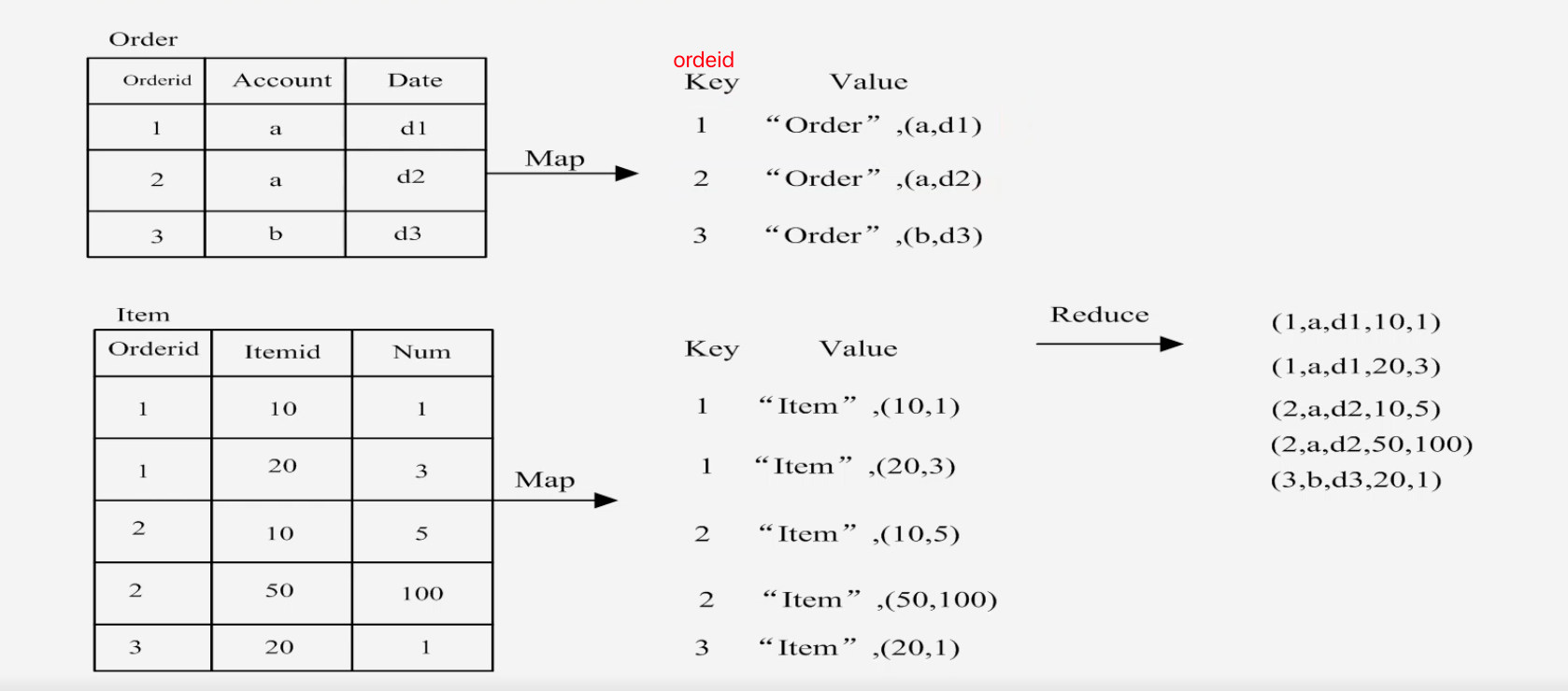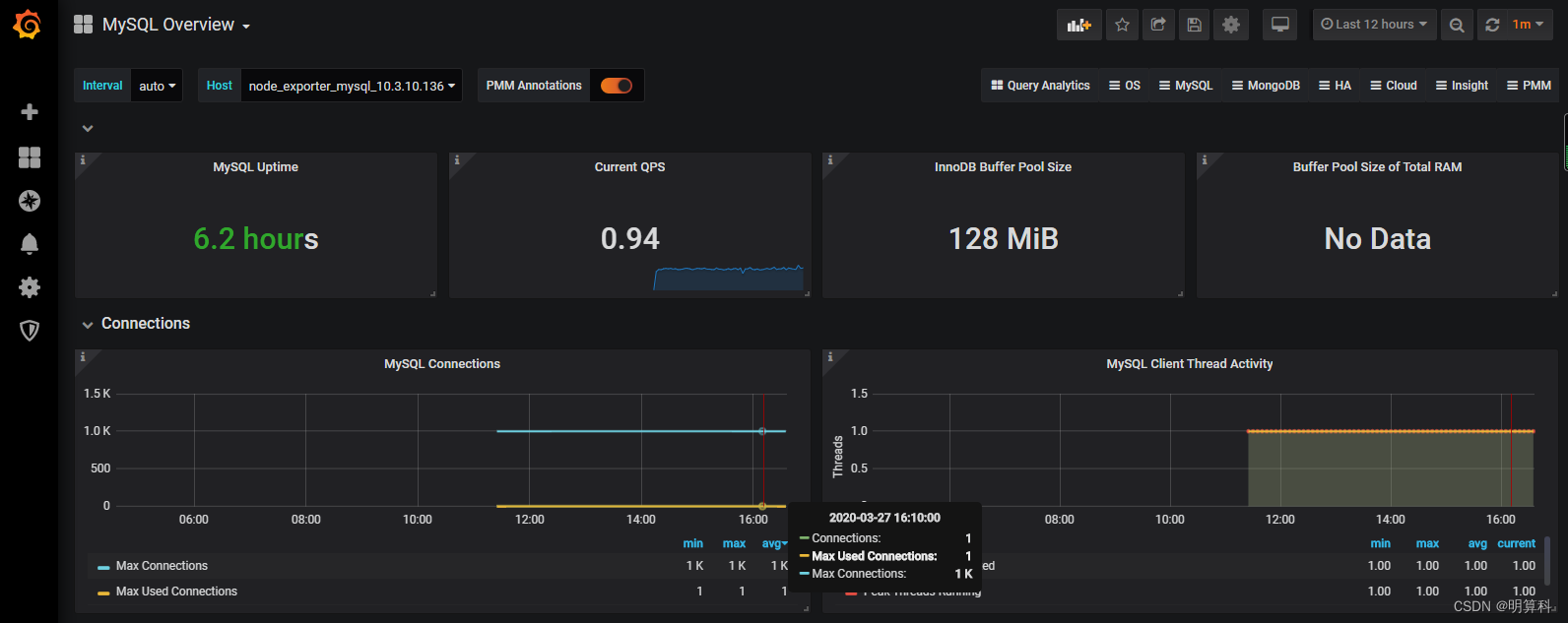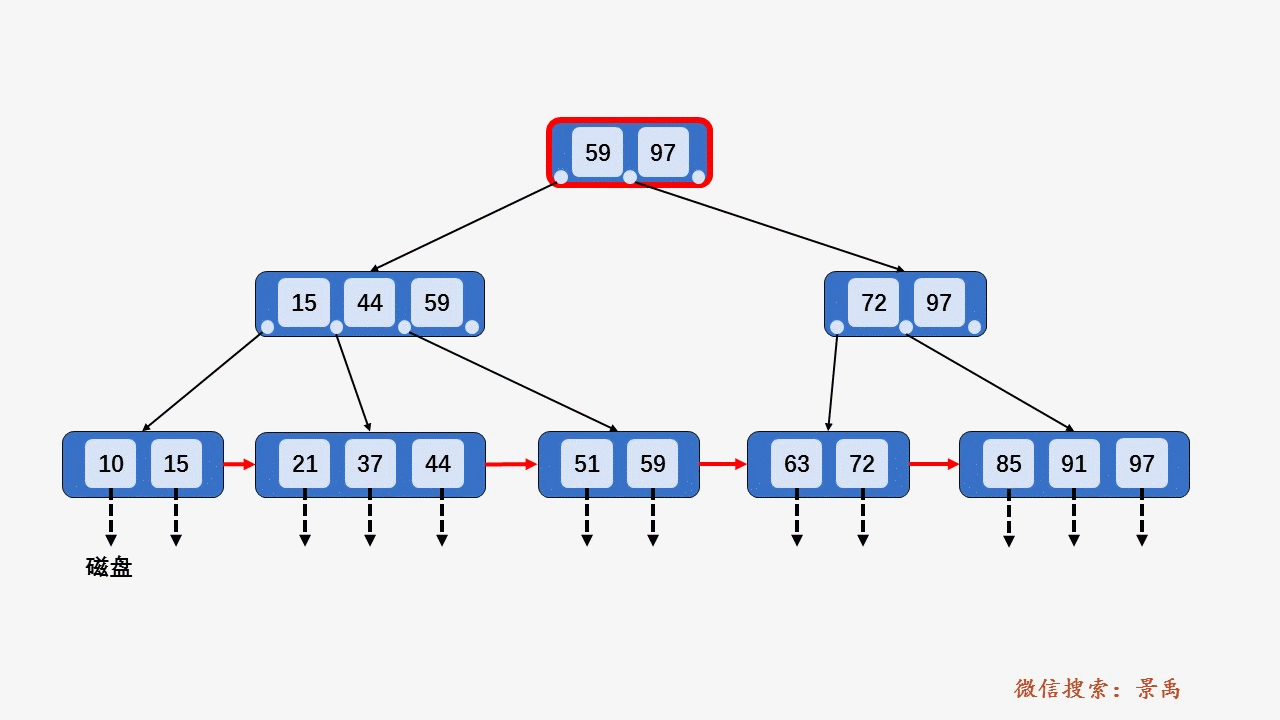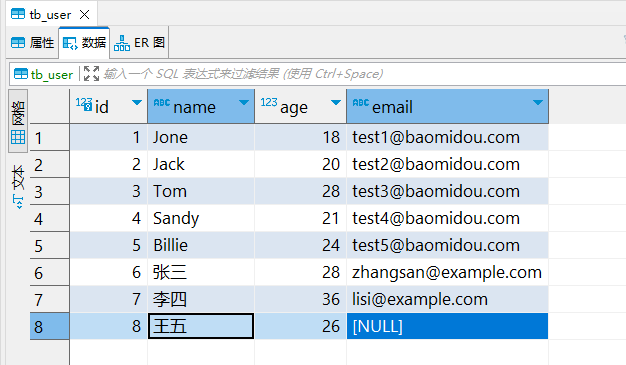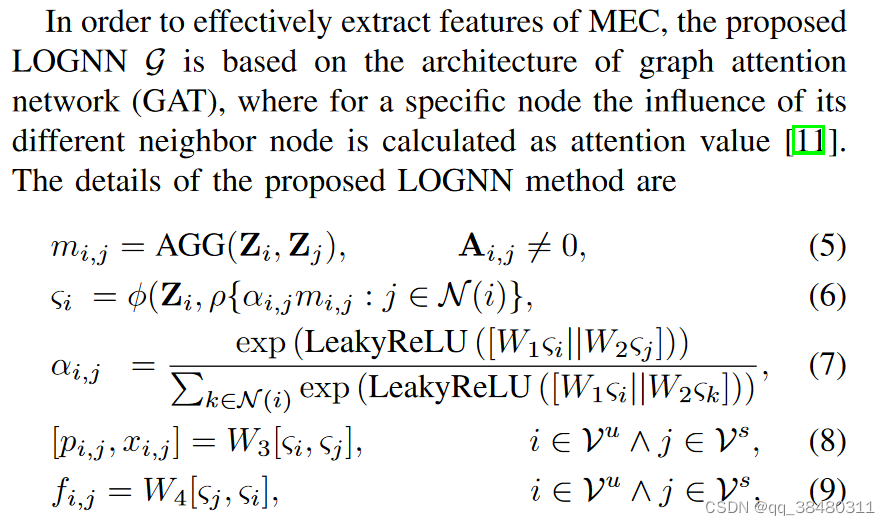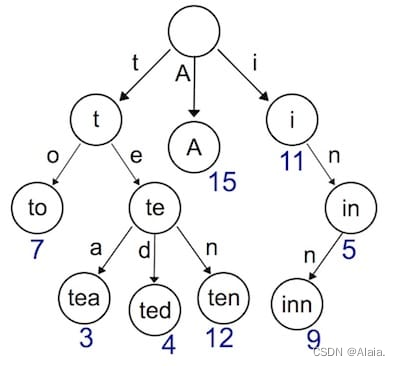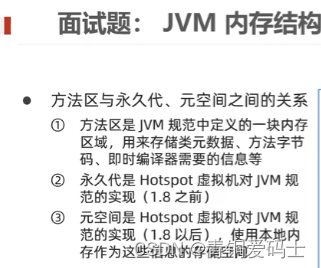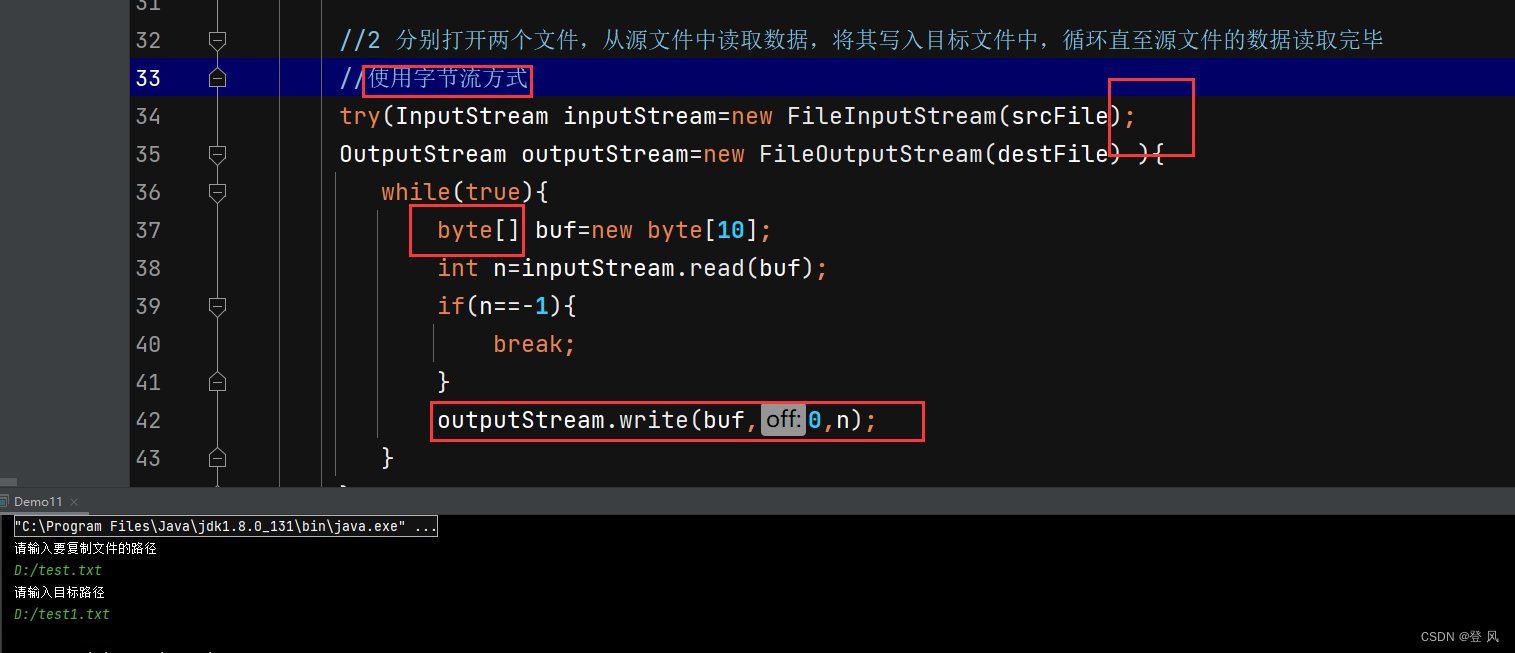七十一、 数据库
71.1 数据库基本概念
-
数据(Data)
- 能够输入计算机并能被计算机程序识别和处理的信息集合数据库 (Database)
- 数据库是在数据库管理系统管理和控制之下,存放在存储介质上的数据集合
-
常用的数据库
-
大型数据库Oracle公司是最早开发关系数据库的厂商之一,其产品支持最广泛的操作系统平台。目前Oracle关系数据库产品的市场占有率名列前茅。IBM 的DB2是第一个具备网上功能的多媒体关系数据库管理系统,支持包Linux在内的一系列平台。中型数据库Server是微软开发的数据库产品,主要支持windows平台。
-
小型数据库mySQL是一个小型关系型数据库管理系统,开发者为瑞典MySQL AB公司,2008年被Sun公司收购,开放源码。
-
基于嵌入式的数据库
基于嵌入式Linux的数据库主要有SQLite, Firebird, Berkeley DB, eXtremeDBFirebird是关系型数据库,功能强大,支持存储过程、SQL兼容等SQLite关系型数据库,体积小,支持ACID事务Berkeley DB中并没有数据库服务器的概念,它的程序库直接链接到应用程序中 eXtremeDB是内存数据库,运行效率高
-
SQLite3基础
www.sqlite.org
SQLite的源代码是C,其源代码完全开放。SQLite第一个Alpha版本诞生于2000年5月。 他是一个轻量级的嵌入式数据库。
SQLite有以下特性:
- 零配置一无需安装和管理配置;
- 储存在单一磁盘文件中的一个完整的数据库;
- 数据库文件可以在不同字节顺序的机器间自由共享;
- 支持数据库大小至2TB;
- 足够小,全部源码大致3万行c代码,250KB;
- 比目前流行的大多数数据库对数据的操作要快;
- 安装方式
- 在线安装方式:
安装成功后,终端输入以下指令,判断是否安装成功:1.确保虚拟机能联网 2.更新更新源sudo apt-get update 安装软件及开发环境sudo apt-get install sqlite3 --->sqlite3数据库软件sudo apt-get install libsqlite3-dev --->sqlite3数据库开发支持库sudo apt-get install sqlitebrowser --->sqlite3数据库操作软件
出现下列语句,标识安装成功,版本不一样无所谓,只要出现 sqlite> 即可sqlite3 my.db
输入 ".quit "退出数据库,SQLite version 3.7.2 Enter ".help" for instructions Enter SQL statements terminated with a ";" sqlite>linux@linux:~$ sqlite3 my.db SQLite version 3.7.2 Enter ".help" for instructions Enter SQL statements terminated with a ";" sqlite> .quit linux@linux:~$
71.2 sqlite3命令语句
sqlite3不区分大小写;
71.2.1 sqlite数据库创建
db --》名字必须以.db结尾
如果sq.db存在则直接打开sq.db数据库,如果不存在则先创建再打开;
SQLite version 3.22.0 2018-01-22 18:45:57 版本无所谓
Enter ".help" for usage hints.
sqlite>
71.2.2 系统命令
系统命令,需要以 . 开头,不需要以 ; 结尾
.quit 退出数据库
.exit 退出数据库
.help 显示帮助信息,获取所有系统命令;
.table 查看当前数据库下的所有表格;
.schema 查看表的结构
71.3 sql语句
以分号(;)结尾;不区分大小写;
没有char*类型,用char类型代替
71.3.1 创建表格
create table 表名 (字段名 数据类型, 字段名 数据类型);
create table if not exists 表名 (字段名 数据类型, 字段名 数据类型);
eg:CREATE TABLE stu (id int, name char, score float);CREATE TABLE if not exists stu1 (id int, name char, score float);
注意:数据库不支持严格的数据类型检查,数据类型写错了,创建是能够成功的,不会有错误提示;
71.3.2 删除表格
drop table 表名;
eg:drop table stu1;
71.3.3 插入记录
- 字符串类型可以使用单引号,也可以使用双引号
1) 全字段插入insert into 表名 values (数据1, 数据2, 数据3);eg:INSERT INTO stu VALUES (2, 'ls', 99);INSERT INTO stu VALUES (1, "zs", 59);注意:1.数据输入的顺序要与创建时候字段的顺序一致;
2) 部分字段插入insert into 表名 (字段名1, 字段名2) values (数据1, 数据2);eg:INSERT INTO stu (id, name) values (9, 'ww');注意:1.数据的顺序要与指定的字段名1,字段名2对应;
71.3.4 查看记录
- .header on 打开表头
- .mode column 对齐
- 在终端输入shell指令:sqlitebrowser sq.db 图形化界面
1) 查看所有记录select * from 表名;eg:SELECT * FROM stu;
2) 查看某几行select * from 表名 where 限制条件;逻辑与 and 逻辑或 oreg:SELECT * FROM stu WHERE id<3 AND score>90;SELECT * FROM stu WHERE id<2 OR id>3;
3) 查看某几列select 字段1, 字段2 from 表名;select 字段1, 字段2 from 表名 where 限制条件;eg:SELECT id, name FROM stu;SELECT id, name FROM stu WHERE score>90;
71.3.5 修改记录
update 表名 set 字段=数值 where 限制条件;
eg:UPDATE stu SET score=60 WHERE id=1;
71.3.6 删除记录
delete from 表名 where 限制条件;
eg:DELETE FROM stu WHERE id=1;delete from stu; 删除表格中的所有数据;
71.3.7 主键(primary key)
primary key 主键;
create table 表名(字段名 数据类型 primary key, 字段名 数据类型);
primary key主键:唯一标识表格中的每一条记录;例如:id字段为主键,当表格中有id==1的记录时,不允许再插入id为1的记录了;
eg:CREATE TABLE stu (id int PRIMARY KEY, name char, score float);
注意:主键的值必须唯一。每一张表格都应该设置一个主键,而且只能设置一个。
71.3.8 拷贝
从a中拷贝所有数据到b中:create table b as select * from a;
从a中拷贝指定字段到b中:create table b as select 字段,字段,字段 from a;
CREATE TABLE stu1 AS SELECT * FROM stu;CREATE TABLE stu2 AS SELECT id, name, score FROM stu;
71.3.9 增加列
alter table 表名 add column 字段名 数据类型;alter table stu add column score int;
71.3.10 修改表名
alter table 旧表名 rename to 新表名;alter table stu rename to stuinfo;
71.3.11 修改字段名(列名)
不支持直接修改列名
1.将表重新命名(a改成b)alter table stuinfo rename to stu;
2.新建修改名字后的表(新建一个a)create table stuinfo (name char, age1 int, sex char, score int);
3.从旧表b中取出数据,插入到新表a中;insert into stuinfo select * from stu;
71.3.12 删除列
不支持直接删除列;
1.创建一个新表b,并复制旧表a需要保留的字段信息;create table stu as select name, age1, sex from stuinfo;
2.删除旧表a;drop table stuinfo;
3.修改新表b的名字a;alter table stu rename to stuinfo;
71.4 sqlite3 API
71.4.1 官网
https://www.sqlite.org/index.html
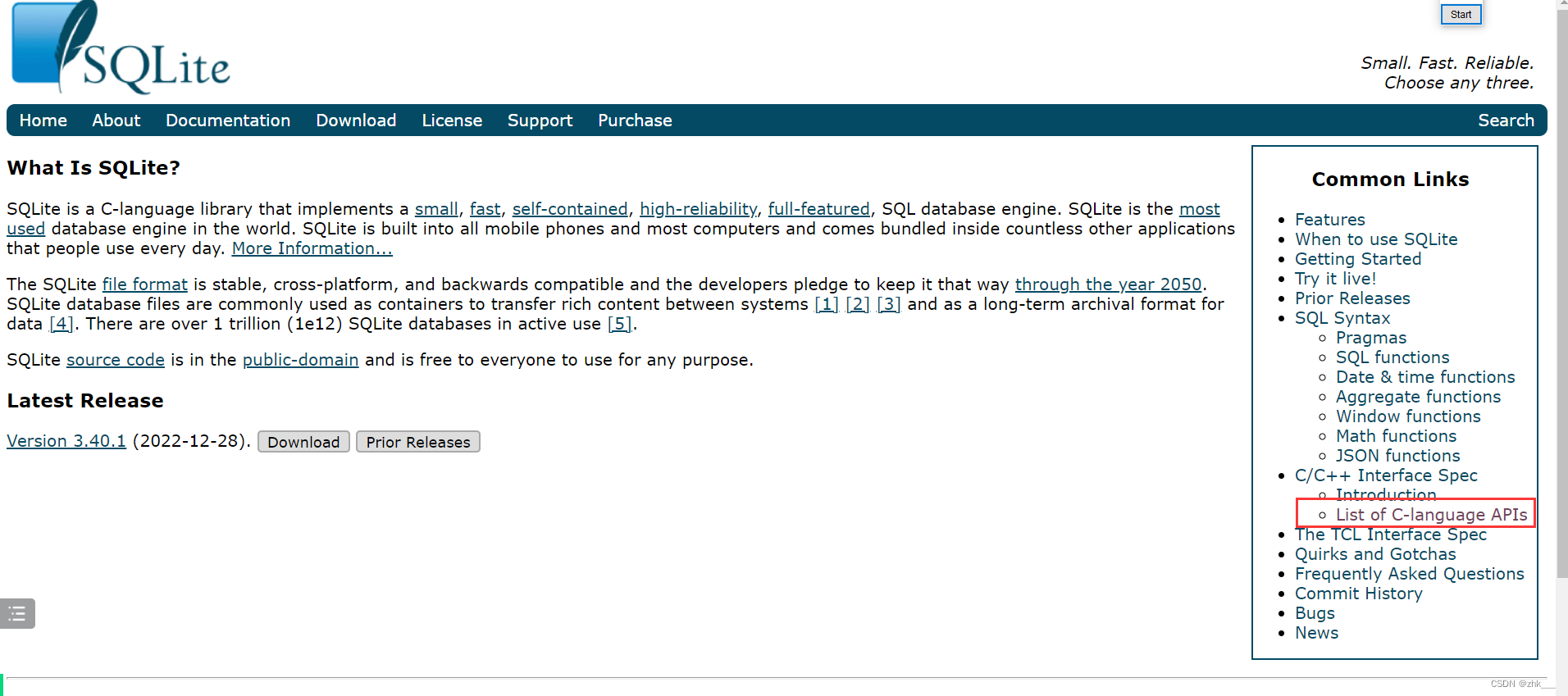
71.4.2 sqlite3的C - APIs
头文件:#include <sqlite3.h>
编译时候要加上-lsqlite3gcc a.c -lsqlite3
71.4.2.1 sqlite3_open
功能:打开一个数据库;
原型:int sqlite3_open(const char *filename, /* Database filename (UTF-8) */sqlite3 **ppDb /* OUT: SQLite db handle */);
参数:char *filename:指定要打开的数据库的路径及名字;sqlite3 **ppDb: 需要定义一个一级指针,取地址传入。等函数运行完毕后,该一级指针中会存储打开的数据库所加载在内存中的首地址;返回值:成功,返回0,SQLITE_OK;失败,返回error_code,注意不是errno,所以无法用perror打印错误信息;
71.4.2.2 sqlite3_close
功能:关闭数据库,同时释放数据库对应的内存空间
原型:int sqlite3_close(sqlite3 *db);
参数:sqlite3 *db:指定要释放的数据库的首地址;
返回值:成功,返回0,SQLITE_OK;失败,返回error_code,注意不是errno,所以无法用perror打印错误信息;
71.4.2.3 sqlite3_errmsg
功能:根据error_code获取对应的错误信息;
原型:const char *sqlite3_errmsg(sqlite3 *db);
参数:
返回值:获取到的错误信息;
71.4.2.4 sqlite3_errcode
功能:获取错误码
原型:int sqlite3_errcode(sqlite3 *db);
参数:
返回值:获取到的错误码
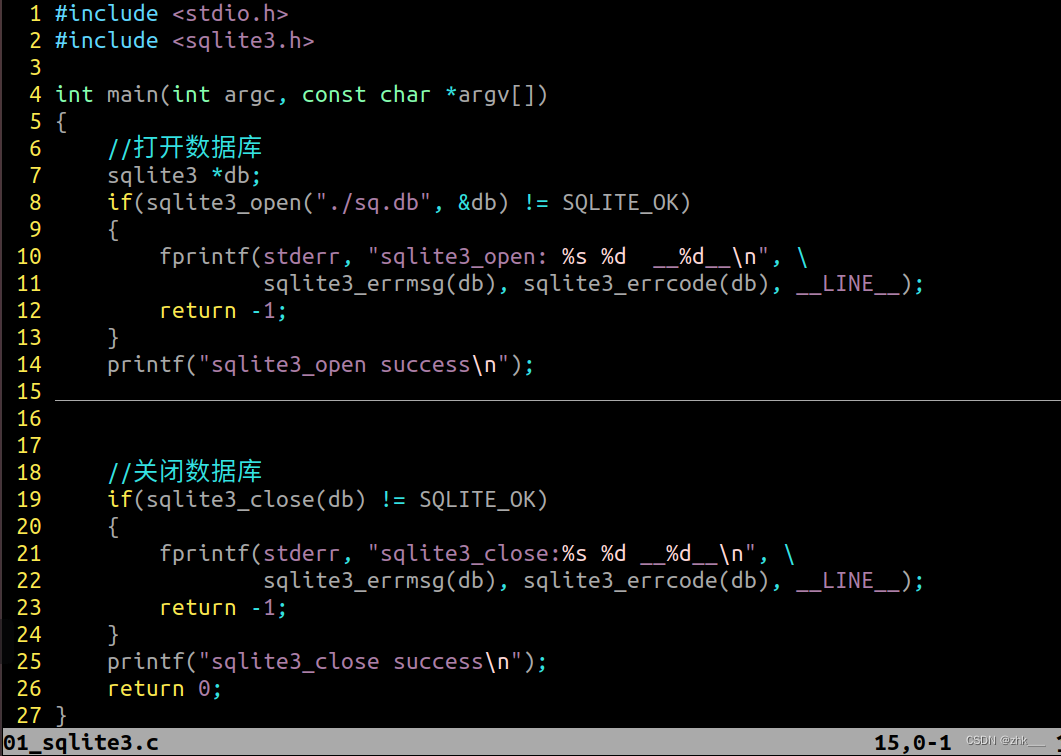
71.4.2.5 sqlite3_exec
功能:执行一条sql语句;
原型:int sqlite3_exec(sqlite3 *db, /* An open database */const char *sql, /* SQL to be evaluated */int (*callback)(void*,int,char**,char**), /* Callback function */void *arg, /* 1st argument to callback */char **errmsg /* Error msg written here */);
参数:sqlite3 *db:打开的数据库句柄指针;char *sql:要被执行的sql语句;int (*callback)(void*,int,char**,char**):函数指针,该指针可以指向返回值是int类型,参数列表是(void*,int,char**,char**)函数该指针只有在sql语句是查询相关语句时候有效,其余时候填NULL;例如: int function(void*,int,char**,char**) {} void *arg:传递给回调函数的第一个参数,char **errmsg:错误信息;
返回值:成功,返回0,SQLITE_OK;失败,返回error_code,注意不是errno,所以无法用perror打印错误信息;
71.4.2.6 回调函数
The 2nd argument to the sqlite3_exec() callback function is the number of columns in the result.
The 3rd argument to the sqlite3_exec() callback is an array of pointers to strings obtained as if from sqlite3_column_text(), one for each column.
If an element of a result row is NULL then the corresponding string pointer for the sqlite3_exec() callback is a NULL pointer.
The 4th argument to the sqlite3_exec() callback is an array of pointers to strings where each entry represents the name of corresponding result column as obtained from sqlite3_column_name().
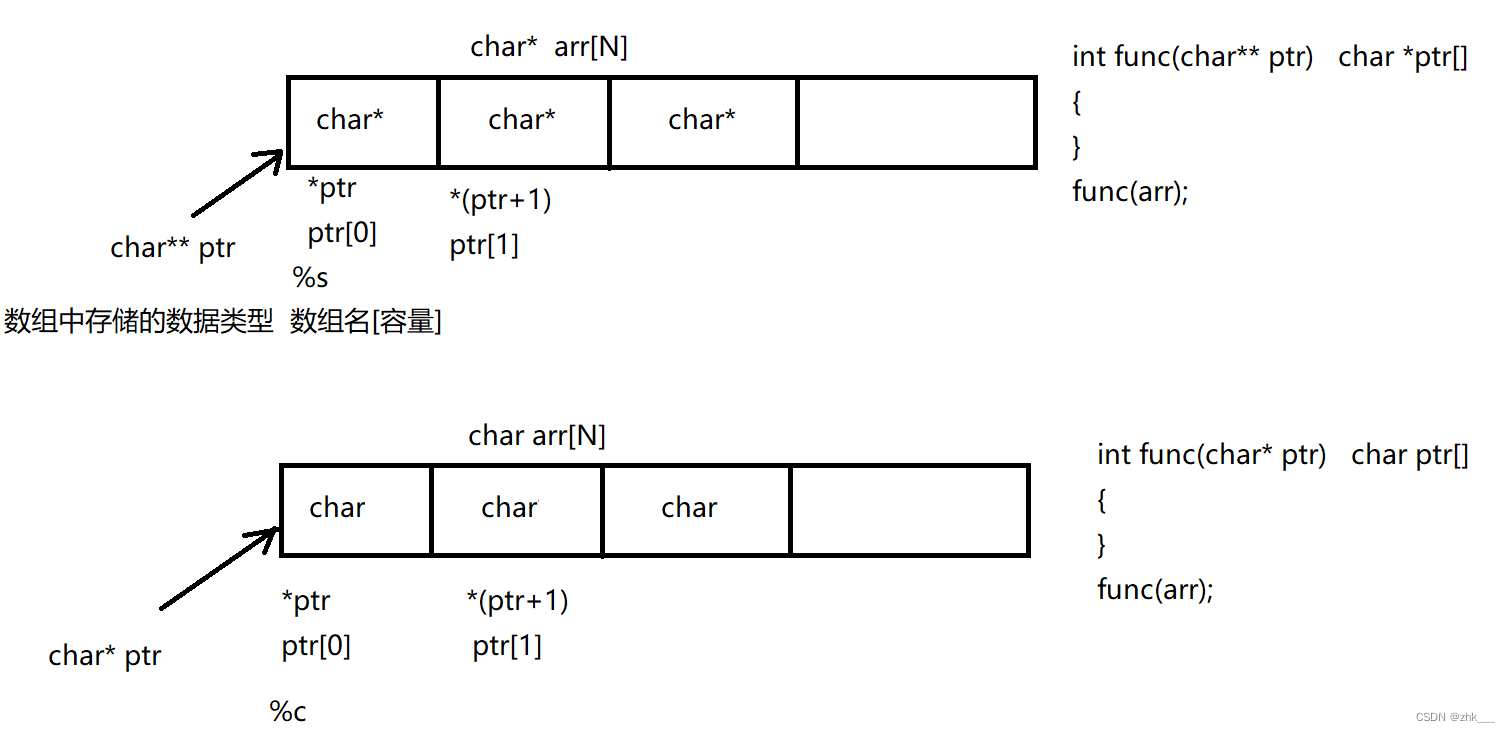
int callBack(void *arg, int ncolumns, char **column_text, char **column_name)
功能:每当有一条满足条件的记录时,该回调函数就会被调用一次;
参数:void *arg:sqlite3_exec函数的第四个参数传入的;int ncolumns:查询结果的列数;char **column_text:该二级指针指向一个指针数组,该数组中的每一个元素都是char*类型,每个char*元素指向的是查询到的内容。char **column_name:该二级指针指向一个指针数组,该数组中的每一个元素都是char*类型,每个char*元素指向的是列的名字;
返回值:必须返回0,该返回值是返回给sqlite3_exec的,若不返回0,则让sqlite3_exec认为回调函数运行失败,从而导致sqlite3_exec函数运行失败; 71.4.2.7 sqlite3_get_table
71.4.2.1
功能:执行查询相关的sql语句;
原型:int sqlite3_get_table(sqlite3 *db, /* An open database */const char *zSql, /* SQL to be evaluated */char ***pazResult, /* Results of the query */int *pnRow, /* Number of result rows written here */int *pnColumn, /* Number of result columns written here */char **pzErrmsg /* Error msg written here */);
参数:sqlite3 *db:;char *zSql:要被执行的sql语句,且只能是查询相关的sql语句;char ***pazResult:该三级指针指向的二级指针最终会存储查询到的结果的首地址;int *pnRow:该一级指针指向的普通变量最终会存储查询结果的行数;int *pnColumn:该一级指针指向的普通变量最终会存储查询结果的列数;char **pzErrmsg:错误信息;
返回值:成功,返回0,SQLITE_OK;失败,返回error_code,注意不是errno,所以无法用perror打印错误信息;
71.4.2.8 sqlite3_free_table
功能:释放sqlite3_get_table获取到的查询内容
原型:void sqlite3_free_table(char **result);
参数:
返回值:
71.4.2.9 示例代码
#include <stdio.h>
#include <sqlite3.h>int do_insert(sqlite3* db);
int do_select(sqlite3* db);int main(int argc, const char *argv[])
{//创建并打开数据库sqlite3* db = NULL;if(sqlite3_open("./my.db", &db) != SQLITE_OK){fprintf(stderr, "sqlite3_open: %d : %s __%d__\n", \sqlite3_errcode(db), sqlite3_errmsg(db), __LINE__);return -1;}printf("database open success __%d__\n", __LINE__);//创建一张表格 "create table stu (id int, name char, score float);"//数据库中sql语句怎么写,代码中sql语句就怎么写,最后的;可以省略不写;char sql[128] = "create table if not exists stu (id int, name char, score float);";char* errmsg = NULL;if(sqlite3_exec(db, sql, NULL, NULL, &errmsg) != SQLITE_OK){fprintf(stderr, "sqlite3_exec: %s __%d__\n", errmsg, __LINE__);return -1;}printf("create table stu success __%d__\n", __LINE__);char choose = 0;while(1){printf("----------------------\n");printf("--------1. 插入-------\n");printf("--------2. 删除-------\n");printf("--------3. 修改-------\n");printf("--------4. 查询-------\n");printf("--------5. 退出-------\n");printf("----------------------\n");printf("请输入>>> ");choose = getchar();while(getchar()!=10);switch(choose){case '1':do_insert(db);break;case '2'://do_delete();break;case '3'://do_update();break;case '4':do_select(db);break;case '5':goto END;}}END://关闭数据库if(sqlite3_close(db) != SQLITE_OK){fprintf(stderr, "sqlite3_close: %d : %s __%d__\n", \sqlite3_errcode(db), sqlite3_errmsg(db), __LINE__);return -1;}printf("database close success __%d__\n", __LINE__);return 0;
}int do_select(sqlite3* db)
{char sql[128] = "select * from stu;";char** pres = NULL;int row, column;char* errmsg = NULL;if(sqlite3_get_table(db, sql, &pres, &row, &column, &errmsg) != SQLITE_OK){fprintf(stderr, "sqlite3_get_table: %s __%d__\n", errmsg, __LINE__);return -1;}printf("查询完毕\n");printf("row=%d column=%d pres=%p\n", row, column, pres);//pres中包含表头的那一行for(int i=0; i<(row+1)*column; i++){printf("%s\t", pres[i]);if((i+1)%column == 0)putchar('\n');}printf("===================\n");for(int i=0; i<row+1; i++){for(int j=0; j<column; j++){printf("%s\t", pres[(i*column)+j]);}putchar(10);}//释放内存空间sqlite3_free_table(pres);return 0;
}#if 0
//查询时候的回调函数
//每当有一条满足条件的记录时,该回调函数就会被调用一次;
int callBack(void *arg, int ncolumns, char **column_text, char **column_name) //void* arg = &flag;
{//满足条件的列数//printf("%d __%d__\n", ncolumns, __LINE__);if(0 == *(int*)arg){//表头for(int i=0; i<ncolumns; i++){printf("%s\t", column_name[i]);}putchar(10);*(int*)arg = 1;}//查询结果for(int i=0; i<ncolumns; i++){printf("%s\t", column_text[i]);}putchar(10);return 0; //必须返回0,该返回值是返回给sqlite3_exec的,//若不返回0,则让sqlite3_exec认为回调函数运行失败,//从而导致sqlite3_exec函数运行失败;
}int do_select(sqlite3* db)
{char sql[128] = "select * from stu;";char* errmsg = NULL;int flag = 0;if(sqlite3_exec(db, sql, callBack, &flag, &errmsg) != SQLITE_OK){fprintf(stderr, "sqlite3_exec: %s __%d__\n", errmsg, __LINE__);return -1;}printf("select stu success __%d__\n", __LINE__);return 0;
}
#endifint do_insert(sqlite3* db)
{int id;char name[20];float score;printf("请输入id name score >>> ");scanf("%d %s %f", &id, name, &score);while(getchar()!=10);char sql[128] = "";char* errmsg = NULL;sprintf(sql, "insert into stu values(%d, \"%s\", %g);", id, name, score);printf("sql = %s\n", sql);if(sqlite3_exec(db, sql, NULL, NULL, &errmsg) != SQLITE_OK){fprintf(stderr, "sqlite3_exec: %s __%d__\n", errmsg, __LINE__);return -1;}printf("insert into stu success __%d__\n", __LINE__);return 0;
}
